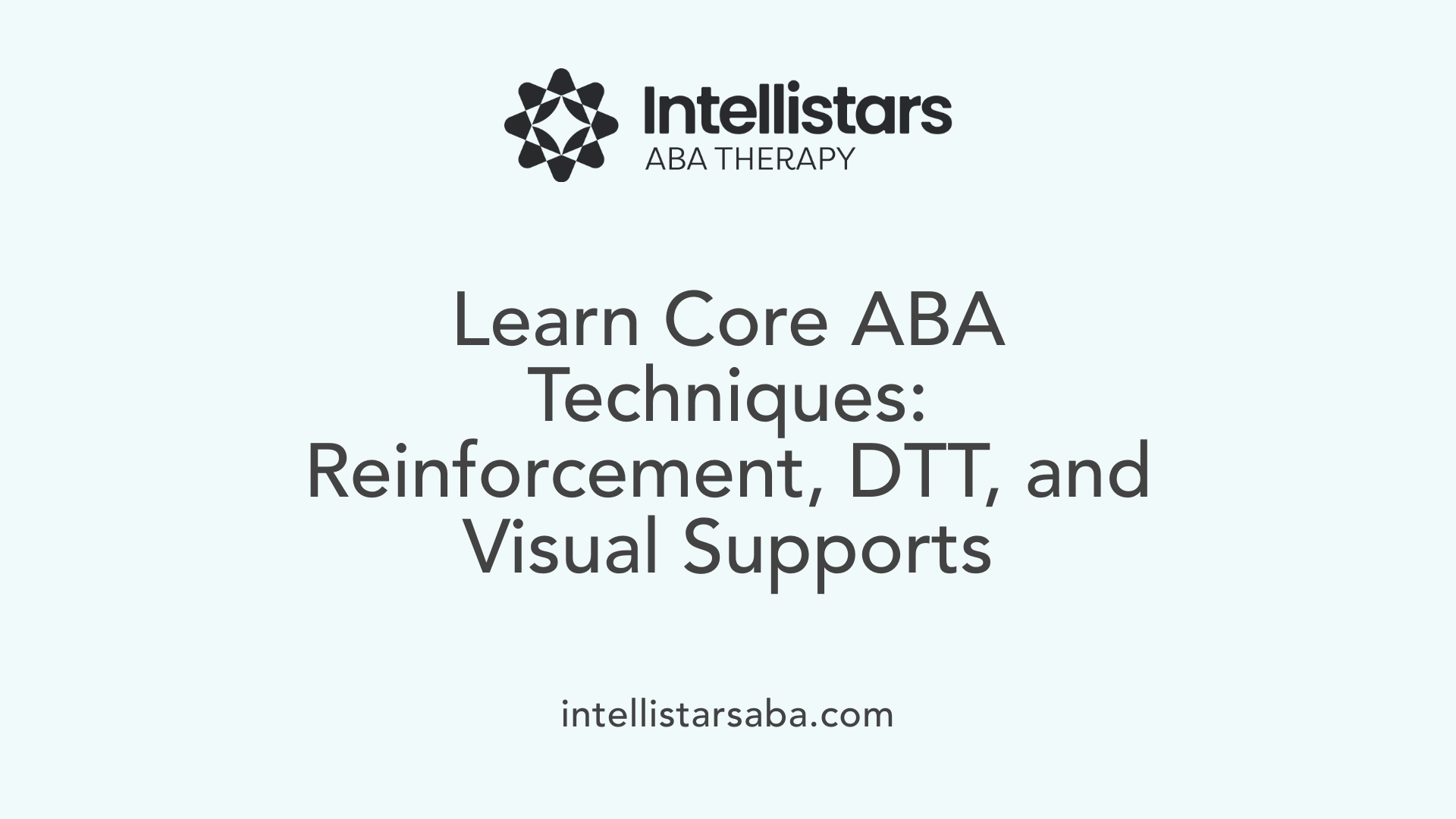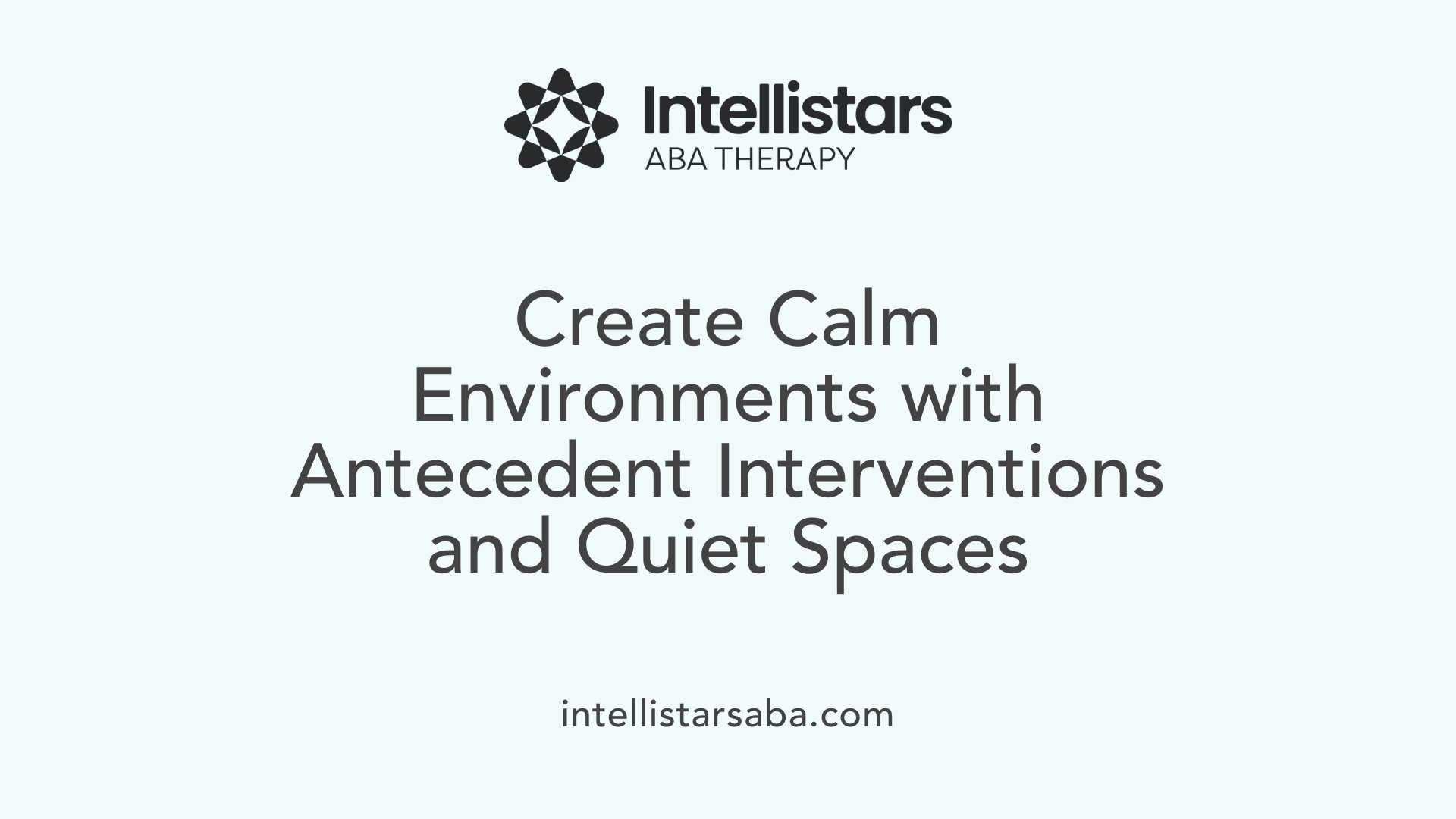Understanding ABA and Its Role in Emotional Regulation
Applied Behavior Analysis (ABA) therapy provides a scientific, evidence-based framework to support individuals with autism spectrum disorder (ASD) in developing emotional regulation skills. By focusing on observable behaviors and the environmental factors that influence them, ABA uses reinforcement and behavior modification techniques to teach individuals how to recognize, manage, and express emotions appropriately. This article explores how ABA interventions specifically target emotional regulation, the techniques involved, and the role of professionals and caregivers in fostering these critical skills.
The Foundations of ABA in Autism Therapy
What is Applied Behavior Analysis (ABA) therapy and how does it help individuals with autism?
Applied Behavior Analysis (ABA) therapy is a science-driven approach that examines how environment and behavior interact to promote learning. ABA focuses on increasing beneficial behaviors—like improving communication and social interactions—while reducing unhelpful or challenging behaviors through methods such as positive reinforcement.
ABA programs are customized to suit the individual needs of each person with autism. They may use structured techniques like Discrete Trial Training and Natural Environment Teaching to teach specific skills in a clear and systematic way. This individualized treatment ensures that therapy addresses the unique strengths and challenges of the learner.
Research strongly supports early and intensive ABA as an effective intervention for many children with autism. It has been shown to improve a wide range of abilities, including language skills, daily living activities, and social behaviors. The goal of ABA therapy is to help individuals gain independence and successfully navigate social and everyday situations, enhancing their overall quality of life.
Specialized Providers Delivering ABA Therapy

Who Typically Provides Specialized ABA Therapy for Individuals With Autism?
ABA therapy for autism is delivered by a multidisciplinary team of qualified professionals. This team commonly includes Board Certified Behavior Analysts (BCBAs), licensed psychologists, speech-language pathologists, occupational therapists, and trained behavior technicians or therapists. These providers utilize their expertise to design and implement individualized treatment plans tailored to each person's unique needs.
Settings for ABA Delivery
ABA therapy is offered in a variety of environments to promote skill generalization and consistency. Common settings include specialized clinics, schools, homes, and community centers. Providers may work independently, as part of autism service organizations such as Autism Behavior Services (ABSI), or within publicly funded programs supported by insurance, Medicaid, or regional centers.
Team Approach in ABA Therapy
Effective ABA intervention relies on a collaborative team approach. Professionals coordinate efforts across different settings and involve caregivers to sustain progress. This collaboration ensures that strategies for skill building, behavior modification, and emotional regulation are consistently applied. Such alignment helps create a supportive network around the individual to optimize developmental outcomes.
Key ABA Techniques Used to Teach Emotional Regulation

What are the common techniques used in ABA therapy for autism?
Applied Behavior Analysis (ABA) therapy incorporates several structured techniques to teach emotional regulation, particularly for individuals with Autism Spectrum Disorder (ASD). One of the foundational methods is positive reinforcement, which rewards desired behaviors such as recognizing and expressing emotions appropriately. This encourages the repetition of these behaviors.
Another widely used approach is discrete trial training (DTT). DTT breaks skills into small, manageable steps and teaches them systematically. For example, identifying emotions might be taught through repetitive, focused trials that provide immediate feedback and rewards.
To assist learners in acquiring new skills, ABA therapists employ prompting and fading. Prompts (like verbal cues or physical guidance) help initiate the correct behavior, but these supports are gradually faded to promote independence.
Visual aids are particularly effective tools in ABA for emotional regulation. They include social stories, emotion cards, and visual scales that help learners identify feelings and self-monitor stress levels. Such visual supports make abstract emotional concepts more concrete and understandable.
Data collection is integral to the ABA process. Techniques such as tracking frequency, duration, and intensity of emotional responses help clinicians assess progress and adjust interventions accordingly. Monitoring antecedents, behaviors, and consequences (the ABC model) also assists in tailoring personalized strategies.
Finally, behavior modification techniques—including reinforcement schedules and extinction of undesirable behaviors—are used to shape emotional regulation skills. Breaking down coping strategies into steps (task analysis) enables learners to master each component, strengthening their ability to manage emotions effectively.
These combined ABA techniques create a comprehensive framework that supports emotional learning in individuals with ASD, enhancing their daily functioning and social interactions.
Teaching Emotional Recognition and Expression

Tools for Emotional Recognition
ABA uses several effective tools to teach individuals with ASD how to recognize and express emotions. Visual aids, social stories, and role-playing are among the most commonly used strategies.
Visual Aids
Visual aids such as emotion cards and charts provide clear, concrete examples of different feelings. These help learners connect facial expressions and body language to specific emotions in a way that is easy to understand.
Social Stories
Social stories break down social situations and emotional responses into simple narratives. They guide learners through common emotional experiences, illustrating how to identify and express feelings appropriately.
Role-Playing
Role-playing exercises give individuals the chance to practice identifying and demonstrating emotions in a controlled setting. This hands-on approach reinforces emotional recognition and expression through interactive scenarios.
Reinforcement Strategies
Reinforcement is a core principle in ABA to strengthen desired behaviors. When learners correctly identify and express emotions, positive reinforcement—such as praise or rewards—is used to encourage these responses. This consistent reinforcement increases the likelihood that emotional recognition skills will generalize to real-life situations.
By combining these tools, ABA creates a supportive environment where emotional recognition and expression are systematically taught, practiced, and reinforced to promote meaningful learning outcomes.
Developing Coping Strategies Through Task Analysis
What is Task Analysis in ABA?
Task analysis is a method used in ABA to break down complex skills into smaller, manageable steps. This approach makes learning easier and more structured, especially for developing coping strategies that require multiple actions.
How is Task Analysis Applied to Deep Breathing?
Deep breathing is taught by breaking the process into distinct parts, such as inhaling slowly, holding the breath briefly, and exhaling fully. Each step is practiced repeatedly, with guidance and reinforcement until the entire sequence is mastered.
How Can Requesting Breaks Be Taught Effectively?
Requesting a break involves several steps including recognizing the need for a break, using an appropriate phrase or signal, and then moving to a designated break area. Task analysis helps by teaching each step systematically, ensuring the individual understands when and how to ask.
What Role Do Calming Activities Play and How Are They Taught?
Calming activities, such as using a stress ball or listening to soft music, are broken down into steps to teach selection, initiation, and sustained engagement with the activity. Task analysis ensures these responses become automatic and effective in reducing emotional distress.
Why Break Down Coping Skills Using Task Analysis?
Breaking down coping skills into smaller steps makes learning less overwhelming and promotes mastery of each component. This systematic teaching increases confidence and independence in emotional regulation for individuals with ASD.
Proactive Environmental Management to Support Emotional Regulation

What is Antecedent Intervention in ABA Therapy?
Antecedent intervention is a proactive strategy in ABA that involves modifying the environment before a behavior occurs. The goal is to reduce triggers that may lead to emotional outbursts in individuals with ASD. By adjusting the surroundings or circumstances, therapists and caregivers aim to prevent challenging behaviors from arising.
How Can Environmental Triggers Be Modified?
Modifying environmental triggers means identifying and changing factors that may cause stress or discomfort. This can include reducing loud noises, minimizing visual distractions, or structuring activities to match the individual's preferences and needs. Such adjustments help create a calm atmosphere that supports emotional regulation.
What Role Do Noise-Canceling Headphones Play?
Noise-canceling headphones are a practical tool used in antecedent intervention. For individuals sensitive to auditory stimuli, these headphones help block out overwhelming sounds that could provoke anxiety or frustration. This simple modification often allows the person to remain calm and engaged.
Why Is Creating Quiet Spaces Important?
Creating quiet spaces offers a designated calming area where individuals can retreat when feeling overwhelmed. These spaces are designed to be soothing and free from excessive stimuli, promoting relaxation and emotional control. Quiet areas serve as accessible refuges that encourage self-regulation and reduce the likelihood of emotional escalations.
By incorporating antecedent interventions such as environmental modifications, noise-canceling headphones, and quiet spaces, ABA therapy effectively supports emotional regulation. These strategies emphasize prevention, empowering individuals to manage their emotions with fewer disruptions.
Promoting Self-Awareness With Self-Monitoring Tools
What is Self-Monitoring in ABA?
Self-monitoring is a behavioral strategy used in ABA to help individuals with ASD recognize and regulate their emotional states. It involves teaching them to observe their own feelings and behaviors in real time.
How Are Visual Stress Level Scales Used?
Visual stress level scales are simple, often graphical tools that display varying intensities of stress or emotional discomfort. These scales help individuals identify how stressed or overwhelmed they feel at any moment by pointing to or selecting the corresponding level. This immediate feedback supports better emotional awareness.
How Does Recognizing Triggers Aid Emotional Regulation?
By using self-monitoring tools, individuals become more aware of specific environmental or internal cues that lead to emotional distress. Recognizing these triggers early allows them to apply learned coping strategies before emotions escalate.
How Does Self-Monitoring Build Self-Awareness?
Self-monitoring fosters self-awareness by encouraging individuals to reflect on their emotional responses regularly. Over time, this practice strengthens their ability to anticipate emotional shifts and manage reactions proactively, leading to improved emotional regulation and greater independence.
Generalization of Skills and Caregiver Involvement
How Are Emotional Regulation Skills Generalized Across Different Settings?
ABA therapy emphasizes generalizing skills to help individuals apply what they've learned in various environments. Naturalistic teaching methods play a crucial role by embedding learning opportunities within everyday situations. For example, children might practice emotional regulation during playtime at home, in school, or on the playground, allowing them to transfer skills beyond the therapy setting.
What Role Does Caregiver Training Play in Ensuring Consistency?
Caregivers receive dedicated training to maintain consistency in implementing strategies for emotional regulation. This involves learning how to recognize cues, use reinforcement techniques effectively, and support coping strategies throughout daily routines. Consistency between therapists and caregivers ensures that the individual receives uniform messages about emotional regulation, increasing the likelihood of sustained progress.
Why is Consistency Important in Implementation?
Consistency helps reinforce appropriate emotional responses and coping mechanisms. When caregivers and professionals work together to apply interventions uniformly, it reduces confusion and strengthens learning. Moreover, consistent reinforcement across settings fosters confidence, enabling individuals with ASD to better manage their emotions in diverse contexts.
In summary, generalization of skills through naturalistic teaching combined with caregiver involvement and consistent implementation forms a foundation for successful emotional regulation in individuals with ASD.
Ethical Considerations and Data-Driven Progress Tracking
How are ethical practices implemented in ABA therapy?
Ethical practice in Applied Behavior Analysis (ABA) centers on respecting each individual's unique needs, cultural background, and dignity. Interventions are tailored specifically to the individual's abilities and circumstances, ensuring that therapy is both relevant and meaningful. Punitive measures are avoided; instead, practitioners emphasize positive reinforcement to encourage desirable behaviors. This approach fosters a supportive environment that promotes trust and motivation without causing distress.
Why are individualized and culturally sensitive interventions important?
Every person with autism has distinct strengths and challenges, making individualized intervention essential. Cultural sensitivity further ensures that strategies are appropriate and respectful of the individual's family values and social context. This personalized approach not only improves engagement but also enhances the relevance and effectiveness of emotional regulation strategies taught through ABA, such as coping techniques and self-monitoring tools.
How does positive reinforcement support emotional regulation?
Positive reinforcement lies at the heart of ABA's strategy to improve emotional regulation. By consistently rewarding appropriate behaviors—like correctly identifying emotions or using learned coping strategies—individuals are encouraged to repeat these behaviors. This method strengthens emotional skills in a constructive way, replacing problematic behaviors with effective, socially acceptable responses.
What role does data collection play in ABA interventions?
Data collection is fundamental to tracking progress and tailoring interventions in ABA. Practitioners gather detailed information on behavior frequency and duration to measure changes over time accurately. This quantitative approach enables them to identify which strategies are effective and to make informed adjustments. For example, tracking the duration of emotional outbursts or frequency of successful emotion recognition helps optimize teaching methods.
How are frequency and duration measures utilized?
Frequency measures count how often a behavior, such as an emotional outburst, occurs, while duration measures record how long these behaviors last. Analyzing both provides a comprehensive picture of behavioral changes. Decreases in frequency and duration of challenging behaviors indicate positive outcomes, guiding therapists to reinforce successful interventions and adjust less effective ones. This data-driven process ensures continual improvement and personalized support.
By combining ethical rigor with systematic data collection, ABA therapy effectively fosters emotional regulation in individuals with autism. Respectful, personalized approaches paired with measurable progress tracking lead to sustained improvements in emotional and social functioning.
Bridging Science and Compassion for Lasting Emotional Growth
Teaching emotional regulation skills through ABA therapy combines scientific rigor with compassionate, individualized care. Through strategies like positive reinforcement, task analysis, environmental adjustments, and active caregiver involvement, ABA creates meaningful opportunities for individuals with autism to better understand and manage their emotions. The effectiveness of these techniques is supported by extensive research, emphasizing the importance of ethical, respectful interventions tailored to each person's unique needs. As these skills generalize across settings and daily life, ABA fosters greater independence, improved social interactions, and enhanced quality of life—empowering individuals with autism to navigate their emotional worlds more confidently and successfully.
References
- Teaching Emotional Regulation with ABA Tools
- Applied Behavior Analysis (ABA)
- The Top 10 Reasons Children With Autism Deserve ABA - PMC
- Applied Behavior Analysis (ABA)
- 6 Benefits of ABA Therapy for Children with Autism
- Applied Behavior Analysis (ABA) for Children With Autism
- The effectiveness of applied behavior analysis program ...






